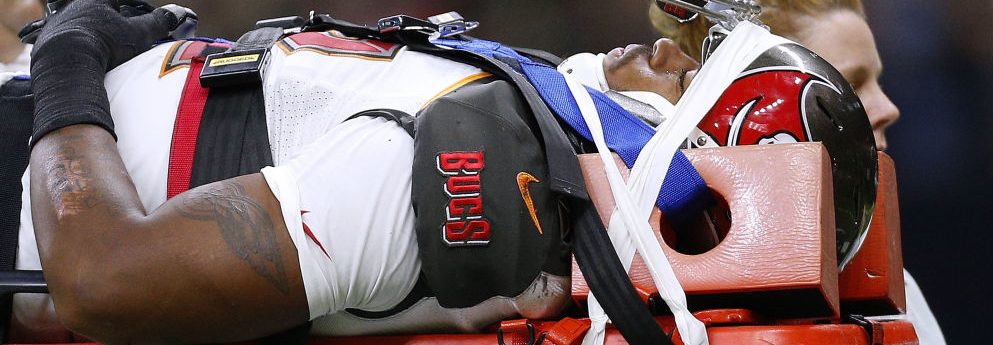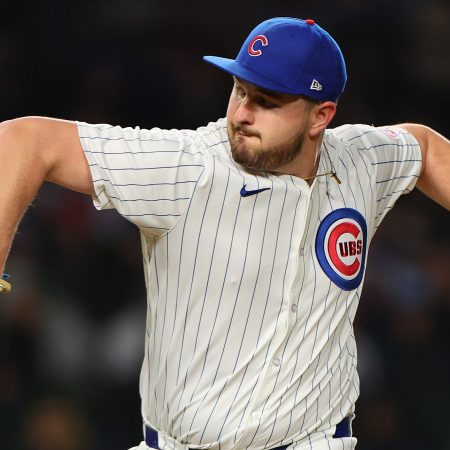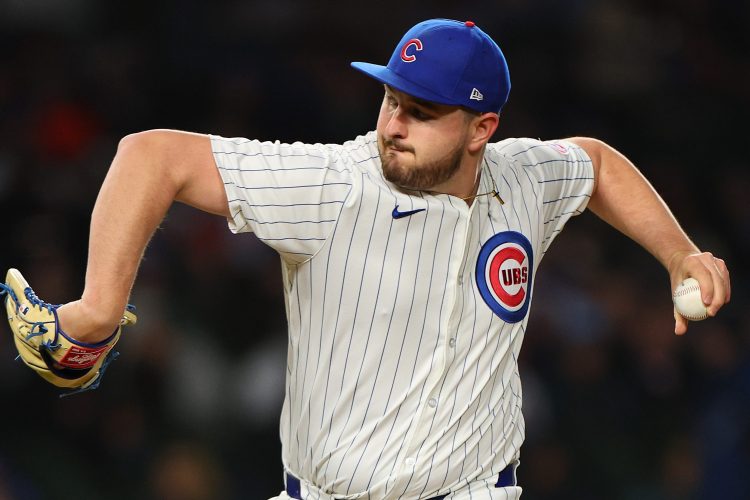Here’s something NFL owners and players agree on: they want more money. $14 billion in expected revenue for 2017 is nice, but that hasn’t stopped NFL Commissioner Roger Goodell from boldly declaring they should generate $25 billion by 2027.
The attempt to reach that revenue level may eventually force everyone to confront two brutal questions:
What’s player health worth?
How much sloppy football can fans stand?
In theory, $25 billion is attainable. After all, the NFL was making a mere $6 billion in 2006 and they’ve more than doubled that. However, it’s not like the NFL hasn’t already done its best to maximize earnings. Among the league’s more aggressive measures:
-Charging full price for preseason games. (As every fan actually attending them can attest, the preseason is an exciting chance to watch star players chat on the sideline.)
-Selling personal seat licenses, so devoted fans can pay for the privilege of earning the right to pay for actual tickets.
-Only covering Super Bowl halftime performers’ expenses and production costs, meaning Lady Gaga technically jumped off the roof in Houston for free.
Of course, there’s always that sweet television money. The NFL first appeared on TV in 1939, reaching an estimated 500 homes or so. It’s been up, up, up ever since, even as the general TV audience has splintered into ever smaller pieces. (The M*A*S*H finale drew 105.9 million viewers in 1983. The Friends finale drew 52.5 million viewers in 2004. The Big Bang Theory’s most recent season finale drew 12.6 million viewers.)
In 1990, the NFL TV contracts totaled $3.6 billion over four years. By 2014, the NFL had begun a nine-year deal that saw the networks pay roughly $3.1 billion combined per season, more than triple the rate in 1990.
Then NFL ratings declined in 2016.
And the drop has continued in 2017.
And this was all before the President of the United States started calling for a boycott. The battle over players protesting inequality and police violence during the national anthem is ulcer-inducing for the NFL because, as with so many things involving Donald Trump, the public is deeply split. Some polls show support growing for players and a majority of fans opposing a rule requiring fans to stand, meaning whatever the NFL does may alienate a large group of people. (It’s worth noting that the NFL did battle with Trump in the ’80s when he and the United States Football League took them to court for antirust violations: he sought $1.69 billion for antitrust violations and wound up “winning” $1, which was ultimately tripled to $3.)
There’s also the wildcard threat to the NFL: cord-cutting. How many people will eventually abandon TV even if it includes the NFL? Will the NFL figure out how to monetize the cutters, so they still get their TV loot (with a portion generated by the Internet) or will those epic hauls level off or even potentially decline?
For good measure, the NFL recently burned bridges with the fans of San Diego, St. Louis, and Oakland by letting three franchises relocate, including two moving back to the Los Angeles market they’d previously abandoned. Recently the USC Trojans outdrew both of L.A.’s new pro teams’ games combined: the moribund Chargers in particular have a gift for generating empty seats, which fill up only when visiting fans take over the stadium.
Throw in the decline in high school football enrollment over the previous decade and growing number of parents finding football unsafe at any age and once sunny skies look decidedly overcast. This may be why NFL is pushing some ideas to boost revenue that are, depending on your perspective, either boldly forward-thinking or downright insane. They include:
-Extending the regular season to 18 games.
-Playing a regular-season game in China. (The NFL has currently pushed this goal back from 2018 to 2019.)
–Establishing a franchise in London by 2022.
Dr. David Geier is an orthopedic surgeon and the author of That’s Gotta Hurt: The Injuries That Changes Sports Forever. He also spent a year with St. Louis Rams, working with the doctors who took care of the players. So, just how feasible are these ideas, according to Geier?
18-Game Season. Geier found this idea feasible… provided two steps are taken.
–More weeks off built into the season: “If it were 18 [weeks playing] out of 20, that would be easier to stomach.” (Currently, each NFL team only gets one bye week.) Indeed, he thought football might want to follow the lead of the other sports and have a mid-season break: “A week of no games wouldn’t hurt anyone and it would help players’ bodies immensely.”
–Expand the rosters. Geier recalled from his days with the Rams that they “were doing physicals on free agents basically every Tuesday. Get a couple guys hurt, bring a couple guys in.” He noted that NFL teams don’t waste roster spots—”Everybody but the second- and third-string quarterbacks play in every game”—which is necessary “because there are so many substitutions.” That’s why he has a modest proposal: “Why don’t they just make the rosters bigger?” Among the reasons to support this idea: It would likely make a longer season an easier sell to the NFL Players Association.
Okay, so the expanded season could be logistically challenging and potentially a little costly for owners, but manageable. What about…
The Regular-Season Game in China. Flying from Los Angeles to Beijing takes roughly 13 hours, with Beijing 15 hours ahead of the Pacific time zone. This gives teams two options:
Attempt to adjust to local time. Geier said sleep experts “usually say give your body a day to adjust per time zone.” Keep in mind that once players adjust, they have to return to the states and quickly adjust back.
Attempt to stay in your home time zone. The game would be scheduled for American TV and locals would just adapt to the bizarre start time. Geier pointed out this might be impossible: “The problem is you don’t just go and play a game. In London you do media all day. They turn it into this festival.” (The NFL wants to make the maximum impact on foreign markets, which is why they play the games there in the first place.)
Geier noted the real danger of the China trip might be “lingering effects.” After all, even people who carefully avoid alcohol and caffeine while drinking plenty of water and adhering to all those other tips veteran travelers urge still sometimes struggle. (As someone who faced the 12-hour time difference between New York and Taiwan in the last year, I found it deeply challenging and I was not required to block All-Pro Von Miller.)
So what’s the best approach? Geier’s answer isn’t encouraging: “Neither strategy would work real well.”
The biggest challenge still awaits.
A franchise in London. London is generally five hours ahead of New York. (There’s a window each year when our nations’ daylight savings times fall out of sync and it shrinks to four.)
Even if the NFL only sends teams from the Eastern time zone to play the London team—which would quickly make for a stale schedule—this is a jarring adjustment. And there’s a strong argument it would be an unfair imposition if the NFL didn’t spread the trip around; the Philadelphia Eagles having to take off for London each season would definitely give an edge to NFC North, South, and West teams that get to play all their games stateside.
Needless to say, the London team would have a beast of a home-field advantage. All those gains, however, would surely be lost once they hit the away games. Some road trips are easier than others: the Jets may not win in New England, but getting there is manageable. Every road trip for London would be epic—dwarfing the NFL’s longest current travel games, like Miami to Seattle or New England to Los Angeles—to the point it would almost seem logical for them to play multiple road games in a row and remain in America, rather than constantly hopping across the pond.
Of course, that approach has its own disadvantages. Geier recalled he used to serve as a “doctor at a women’s professional tennis tournament in Charleston. I would examine all these injured players and we would talk.” Charleston was the last tournament in a series of events held in North America: “A lot of [the players] would be away for about five straight weeks.” How did they find the trip? “They would say, ‘I’m just ready to be home for a few days.’ They’re tired, they’re depressed, they’re living in hotels.”
In summary: “That London team, they’re going to struggle.”
It’s easy to say, “Hey, players get a lot of money—they can handle some travel.” True enough, and teams don’t fly in cramped commercial seats and will doubtless invest in top experts and techniques to maximize player rest and recovery. But the fact remains: The NFL’s success is built on the belief that it is the only place to go to see the world’s best football players playing at their absolute highest level. So, the NFL’s global ambitions may be quickly undone if they result in teams being error- and injury-prone because they can’t quite kick jet lag.
This all leads to the potential nightmare scenario in the 2020s: NFL players look at their new 18-game season and see that their team opens in China… and later in the year hits London too.
As a physician focused primarily on athletes’ health, Geier did concede this globe-trotting schedule potentially had one great benefit: it would be the ultimate way to “punish the tanking teams.” Meaning in the not-so-distant future, the Cleveland Browns may be amassing some serious frequent flyer miles.
Whether you’re looking to get into shape, or just get out of a funk, The Charge has got you covered. Sign up for our new wellness newsletter today.
























